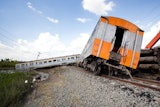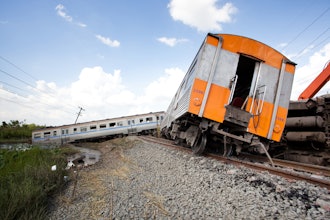Modern technology has made it possible for one man to do bigger jobs than ever, but when heavy equipment comes out, it’s imperative to understand the risks.
From forklifts and earthmovers to jackhammers and machining equipment, just about any piece of heavy equipment has the potential to do serious harm in irresponsible hands. While it can be tempting to pick up a tool and get the job done, it’s always a better idea to get familiar with safety precautions before you operate equipment.
Here are a few suggestions for how to make sure your next heavy equipment job is completed safely.
Work By The Rules
You probably know there are entire organizations dedicated to ensuring American workers stay safe on the job. Probably the best-known of these is the Operational Safety and Health Administration (OSHA).
OSHA is a government-affiliated organization that puts forth a set of guidelines specific to heavy industrial applications. Managers and supervisors on warehouse and heavy equipment jobs are responsible for ensuring their crew and work environment are compliant with OSHA standards at all times.
In addition to the industry-specific standards, OSHA general guidelines set forth government expectations for any warehouse. They include periodic rest for employees, removing clutter from floors, aisles and stairways, and training employees about how to work safely in hot and humid conditions.
Common Mistakes
Workers are advised to take special precautions to avoid some of the most common OSHA violations. Among these are unsafe forklift operation, improper electrical wiring, improper mechanical power transmission and lack of portable fire extinguishers.
Unsafe forklift operation accounts for nearly 100,000 injuries each year, which is why you must carry a particular OSHA certification to operate one. Employers are expected to provide a certification program for their staff who will operate forklifts, and employees must complete the training on the job or before their employment before running the lift in a work setting.
In many warehouse-type environments, it's appropriate for employees to wear protective clothing such as kneepads, hardhats, and steel-toed boots. A maintenance supervisor should be appointed to inspect the work environment regularly and ensure it is OSHA compliant.
Clutter And Unrestricted Areas
Even small things can cause a lapse in compliance, such as failing to clear a loading dock or assigning employees who unpack materials to work without safety knives. Like forklifts, lift tables have the potential to be extremely dangerous and require OSHA certification.
Employees should always be trained to report any strange smells or sounds they hear coming from equipment. Poorly maintained machinery can lead to dangerous failures, and it is important that mechanics regularly inspect heavy machines that employees use often.
If materials that are known to be harmful to one's health are in use on the site, they should be properly labeled and kept at a distance or in safe packaging whenever possible. If a particular area of the jobsite is used for procedures that might expose an employee to a harmful substance, there should by ample signage encouraging employees to use proper safety precautions.
Fire Hazards
Your jobsite should always have portable fire extinguishers on hand and additional extinguishers available in areas where there is a significant fire risk. Sprinklers and alarms must be installed according to OSHA regulations. Employees should be trained in how to put out different types of fires depending on their work application.
In the event of a fire, all employees should be trained on how to access fire protection equipment and exit the premises. You should post clear signage of the evacuation route at multiple points in the building, and demarcate it on the floor where possible.
First Aid
Make sure that your workplace is well stocked with proper first-aid kits. These should be readily available and should be checked periodically to see which supplies need to be restocked. You can add the locations of first-aid kits to the fire-escape map to assist in the event of an emergency.
Common Sense
Even though we sometimes think working safely is a no-brainer, it’s easy for a busy employee to make an honest mistake and put themselves or a fellow employee in danger. If there’s even a chance for something to go wrong, do whatever you can to keep it from happening and have a plan in case it does.
Megan Ray Nichols is a freelance science writer.






















